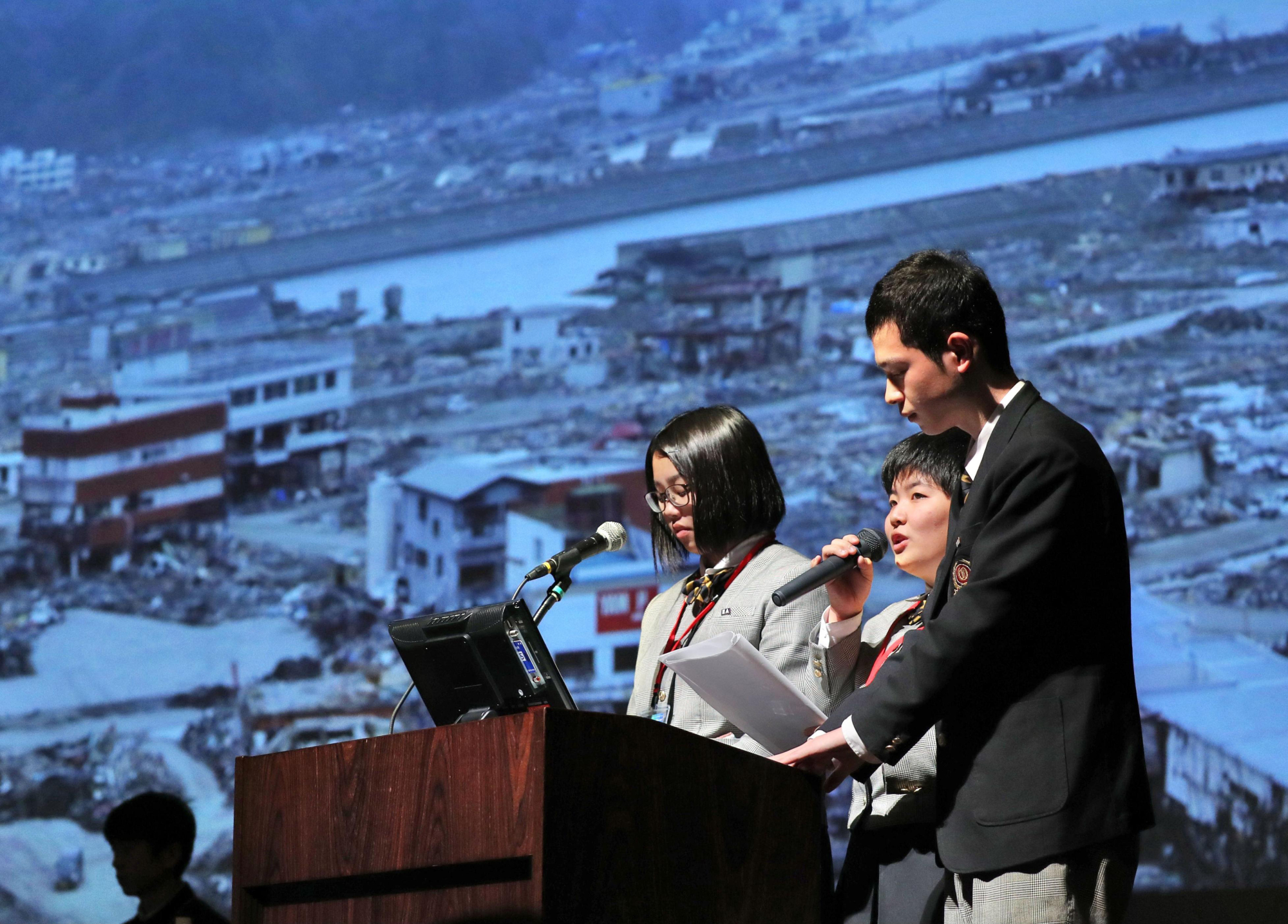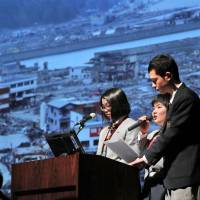Disaster prevention experts from Japan and abroad gathered in Sendai on Saturday to discuss lessons learned from the earthquake and tsunami that devastated coastal communities throughout Tohoku in 2011.
The first World Bosai Forum, incorporating the Japanese word meaning disaster mitigation, was organized by the municipal government and Tohoku University following adoption of a global guideline for disaster risk reduction at a U.N. meeting in Sendai in 2015.
The Sendai Framework for Disaster Risk Reduction noted that the state has the primary role in reducing such risk. But it also recognizes that others, including local governments and the private sector entities, must be involved.
The World Bosai Forum is to be held every two years, with organizers hoping that the Japanese word bosai will become a universal term associated with the field.
Youths from areas affected by the March 2011 disasters joined the event to share lessons they learned from the magnitude 9 quake and tsunami, which left more than 15,000 people dead and many still unaccounted for.
Students from Otsuchi High School in Iwate Prefecture explained their efforts to chronicle — through photos taken from fixed observation points — the process of reconstructing the town of Otsuchi.
And Fukushima Prefecture high school students reported on their efforts to monitor radiation levels in the wake of the Fukushima No. 1 nuclear power plant disaster triggered by the massive 2011 tsunami.
Katsuya Onishi, the mayor of Kuroshio town in Kochi Prefecture, which may be affected by a government-predicted massive quake in the Nankai Trough, said, "Our town's challenge is to realize zero victims" in such an event. "It is important that more residents will lead efforts to prepare for a disaster, as there are limits in government-initiated efforts," he added,




